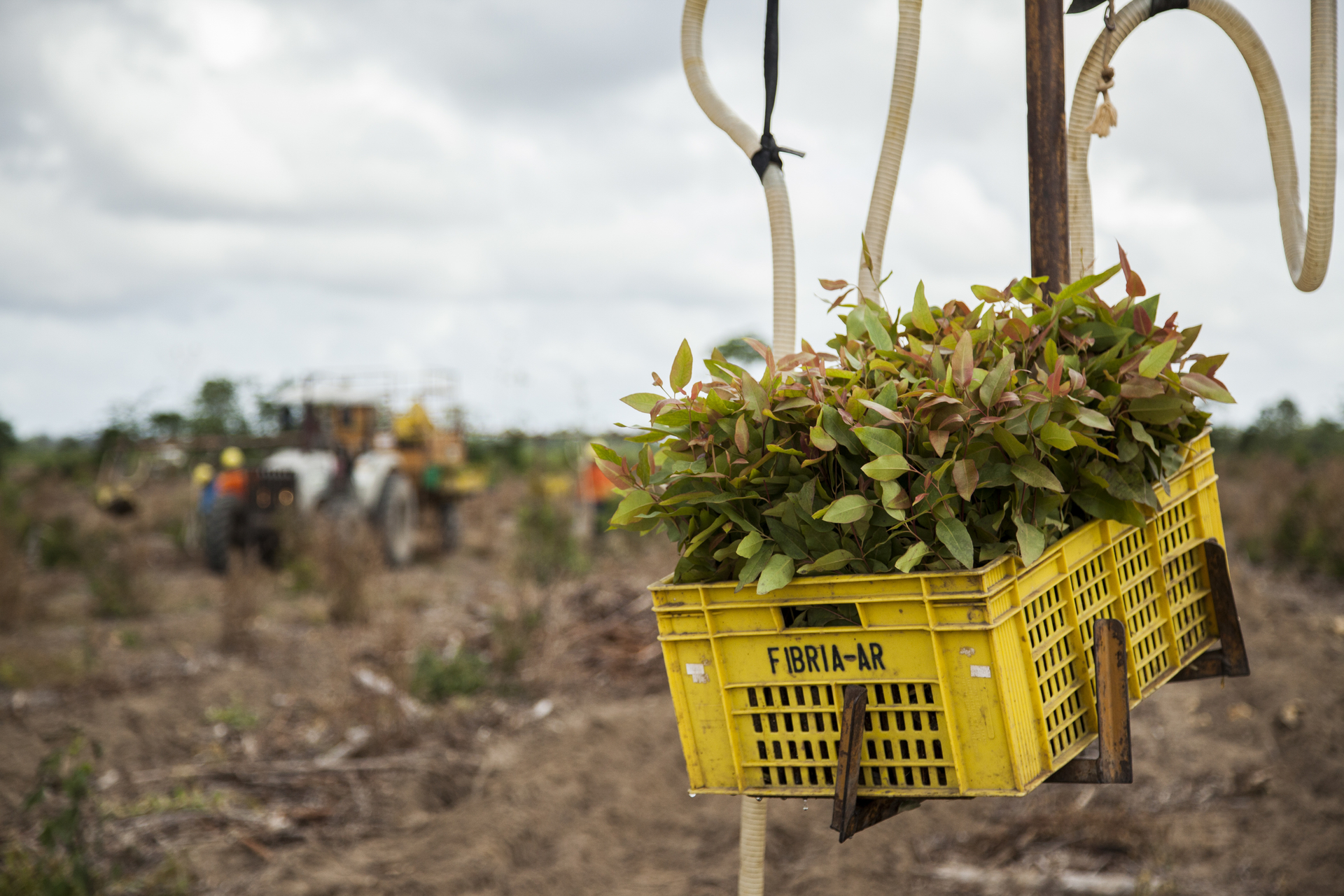A company does not exist without a view on profit. For Fibria, however, sharing wealth with its audiences is in the essence and continuity of its business. Our relationship with our suppliers is no different. Our value proposition includes developing our suppliers in the municipalities where we operate, generating a virtuous cycle for the local economy, partners, society, and the company.
In 2016, Fibria reached a volume of 51% of local purchases in the regions where it operates, considering internally defined criteria.
Supplier portfolio is one of the company's key assets. It is estimated that approximately 30% of the purchase volume is with suppliers that have been working with Fibria for more than 14 years (two eucalyptus cycles). Tangible and intangible aspects are among the criteria for choosing a supplier. In addition to cost and quality, we analyze its human and social and environmental development practices.
We share knowledge, our challenges, and dilemmas, and we evolve together. Our most recent project, which is under development, is to implement a supply chain management strategy that includes social and environmental criteria in its various phases.
Sustainable Procurement
Social and environmental criteria are already applied in the procurement analysis across Fibria's operations; however, at different stages and standards, without these specific practices being integrated and, therefore, strengthening the company's systemic performance. Given this scenario, we identified the opportunity to implement a long-term sustainability strategy in our supply chain.
Thus, in 2016, we benchmarked best practices on the market and carried out a comprehensive diagnostics study of Fibria's level of commitment to sustainability in terms of supply. We also created a matrix that allocates the 38 purchase categories in operating quadrants, considering the strategic level and the social and environmental risk level.
At the end of the year, we conducted a procurement workshop, where we presented our diagnosis and discussed with the team and partners the long-term challenges and actions that, in 2017, will help us achieve a higher maturity level concerning sustainability.
i9 for Suppliers
The i9 for Suppliers values commitment and collaborative culture in the relationship with Fibria. This program was launched in 2015 in the silviculture process of Vale do Paraíba, São Paulo, initially to have its methodology tested and expanded. Last year, the program gathered 64 ideas, some of which were implemented.
Approval
The supplier approval processes continue to evolve at Fibria.
Our assessment criteria consider aspects such as social and environmental risks, labor rights, alignment with our forest management practices, and respect for the environment. In 2016, a total of 306 suppliers were approved.
Portfolio
Currently, Fibria has approximately 340 contracts with significant suppliers, which represent approximately BRL 4 billion. Significant suppliers are those:
with spending of over BRL 5 million;
that supply food, transportation, or health insurance, since they are services associated with Fibria's organizational climate;
that supply raw and essential materials for pulp production, our end product.

Services Contracting Committee
The Services Contracting Committee (CCS) is a mechanism that establishes guidelines and ensures consistency in hiring permanent services considered critical by Fibria. Significant suppliers for Fibria are those with annual cost in excess of BRL 5 million, those that provide services that affect the company's organizational climate - food, transportation, or healthcare - and those that provide raw and essential materials for pulp production, our end product.
This Committee can make a comprehensive analysis of suppliers, since it assesses legal, safety, sustainability, and tax aspects, among others. In 2016, the committee recorded 13 cases, which represent BRL 134.3 million in the year. In the period, we can also highlight the beginning of the process to review the structure of the committee and of the procedures in place.
